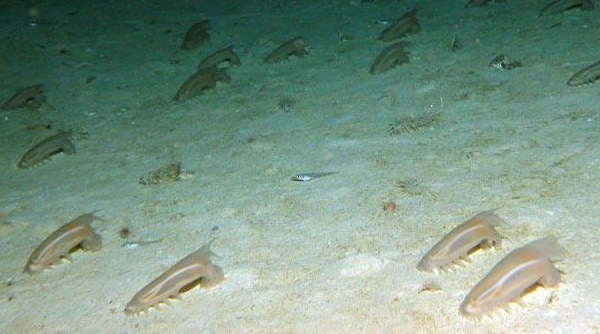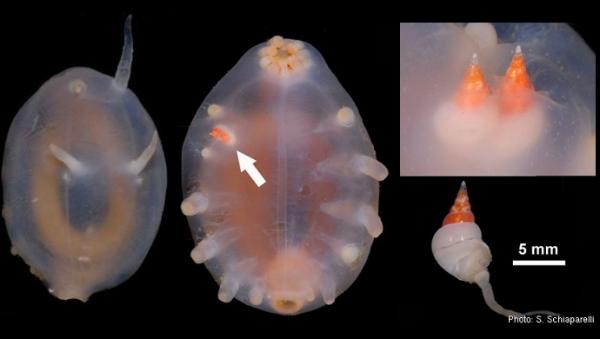Written by Jonathan Wojcik

The deep sea abyss is home to a wide variety of fascinating echinoderms, but the most
plentiful - and perhaps some of the most plentiful animals in all the abyss - are a group of
sea cucumbers known as the Scotoplanes, or sometimes "sea pigs."

Unlike other sea cucumbers, scotoplanes possess rows of "feet" with which to gracefully
navigate the "marine snow" blanketing the abyssal floor, a soft, sludgy desert bacteria and organic waste from around the globe. Their oral tentacles endlessly sift through this oceanic sewage for sustenance, and they may even sniff out the carcasses of whales or
other large animals. They are known to occur in massive concentrations, with what seem
like "herds" of several hundred individuals. Perhaps due to the water's current, grazing
scotoplanes tend to face the same direction at once.

With their vast numbers, sea pigs unsurprisingly suffer from many specialized parasites
and predators. In these incredible images, we get a detailed look at some parasitic
snails deeply embedded in their scotoplane host.

Biologist Sadie Mills poking at a pudgy sea-pig,
photographed by Richard O'Driscoll, NZ IPY-CAML

|

|

|
|
|
|
|